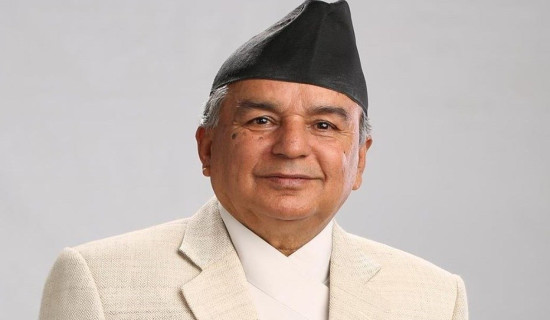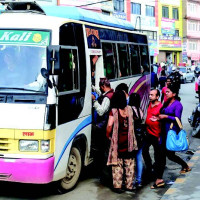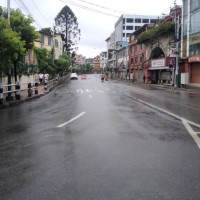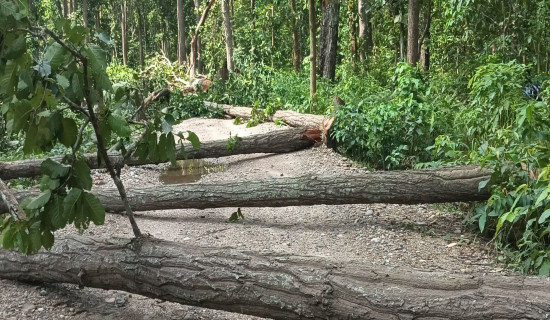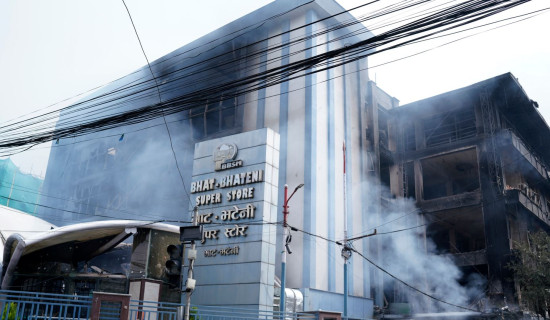- Sunday, 14 September 2025
Statement recording on Tinkune incident begins
By A Staff Reporter,Kathmandu, May 27: Proceedings have officially commenced at the Kathmandu District Court regarding the violent incident that occurred in Tinkune, Kathmandu, on March 28.
Defendants linked to the case have begun giving their statements; however, two prominent Rastriya Prajatantra Party (RPP) leaders --Senior Vice President Rabindra Mishra and General Secretary and Member of Parliament Dhawal Shumsher JB Rana -- remain out of contact despite being released on bail.
According to Superintendent of Police (SP) Apil Raj Bohora, Spokesperson for the Kathmandu District Police Range, both Mishra and Rana have not responded to legal summons.
They face multiple indictments, including charges of sedition, criminal mischief, organised crime, and conspiracy, filed in accordance with the National Penal (Code) Act-2017, under Chapter 3, which outlines offenses relating to disobedience of public authority.
SP Bohora stated that among those under investigation in connection with organised crime and public unrest, 34 individuals were released on bail while three others were released in cases related to offenses against the state. “Mishra and Rana, though released on recognisance, are currently unreachable,” he confirmed.
As per legal procedure, individuals released on bail are obligated to appear before the court when summoned. Lawmaker Rana was granted conditional release on April 20 on medical grounds, with his wife acting as his guarantor.
He has since returned from Mumbai, India, on April 27 after receiving medical treatment.
Mishra was granted bail by the Supreme Court on May 16, under a habeas corpus petition. The bench comprising Justices Kumar Chudal and Til Prasad Shrestha issued the release order, permitting him to remain out of custody under court supervision.
Deepak Kumar Shrestha, information officer at the District Court, said that if the absconding defendants fail to appear for their statements, arrest warrants will be issued in accordance with prevailing laws.
“Statements from those in attendance have commenced. We anticipate concluding all testimonies within this week. Should any individual fails to appear, they will be apprehended and presented before the court,”
he asserted.
The Office of the Government Attorney has filed two separate charge sheets -- one involving 50 individuals including protest leader Durga Prasad Prasain, and another involving 11 individuals -- under Section 32 of the Criminal Procedure Code, 2017. Eleven have been charged under criminal mischief, while others face charges
on individual basis.
Additionally, four juveniles alleged to have participated in the violence are being prosecuted in the Juvenile Court. One faces sedition charges, while the remaining three have been charged with criminal mischief. Although police had recommended prosecution against 108 individuals, the government attorney’s office proceeded with indictments against only 65 individuals, including
the four minors.
Durga Prasad Prasain, identified as the chief coordinator of the pro-monarchy demonstration, faces five separate counts, with the prosecution demanding significant punitive measures.
The District Police spent nearly two months investigating the Tinkune incident, during which 90 individuals were apprehended. As of now, 18 individuals remain at large and are listed
as fugitives.
The demonstration on March 28 turned violent, resulting in the deaths of journalist Suresh Rajak of Avenues Television and Sabin Maharjan of Kirtipur–4. Police gunfire injured 20 individuals, three of whom remain under medical care.
Among them, Revika Khatri of Udayapur, who sustained a thigh injury, is undergoing treatment at the Manmohan Cardiothoracic Vascular and Transplant Centre. After initial intensive care at Civil Hospital, she was transferred for reconstructive surgery due to substantial blood loss.
Dilli Prasad Luintel of Bhojpur, who sustained abdominal gunshot wounds, is receiving treatment at the Trauma Centre. Meanwhile, Ram Hari (Rhythm) Shrestha of Kavrepalanchok, who was shot in the forearm, is undergoing regular follow-up care at B&B Hospital. He still requires nerve surgery due to the metal implants placed in his arm.
Police records indicate that the demonstration caused damage to 15 private residences, 37 private institutions (including two media houses, a supermarket, two hospitals, four banks, two cooperatives, 20 businesses, one school, two political party offices, and three government offices), one industrial unit, two police stations, and a traffic island. Vandalism and arson also resulted in damage
to 69 vehicles.



